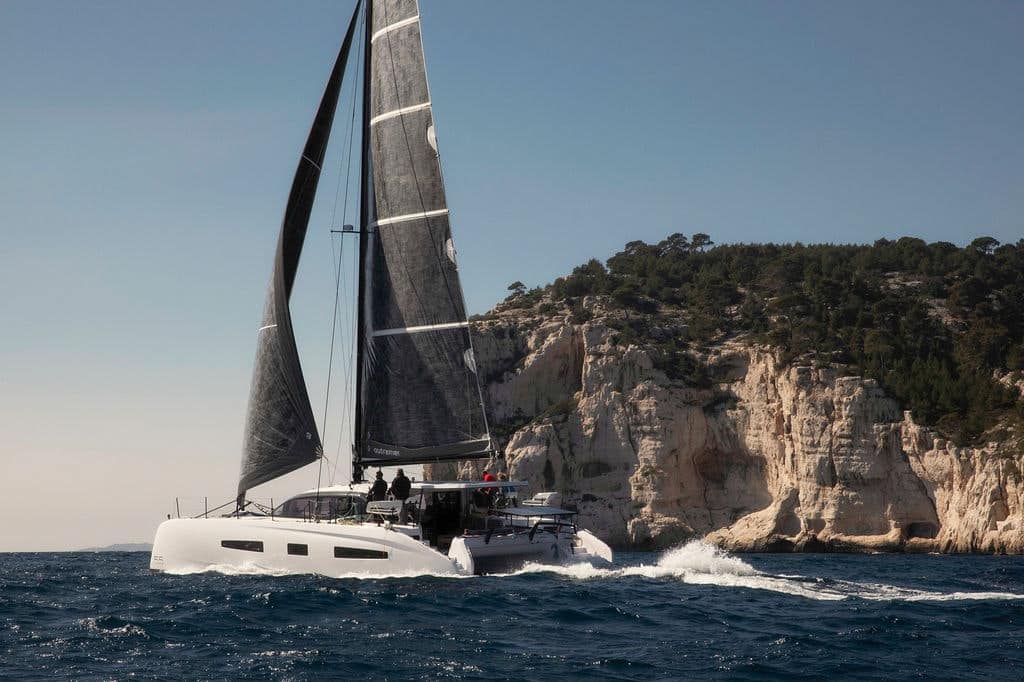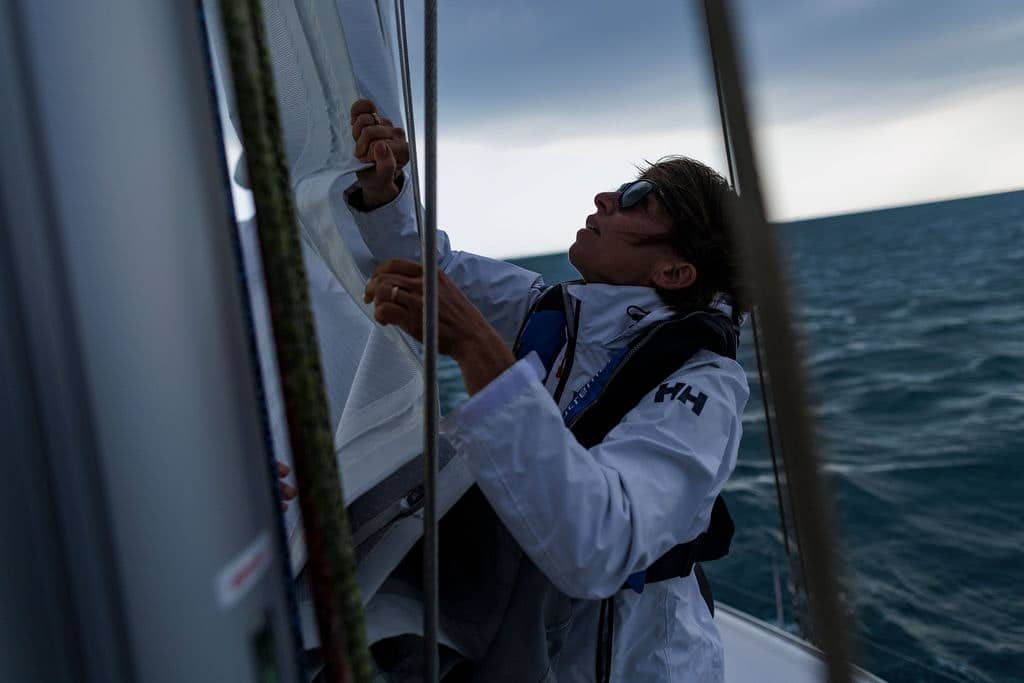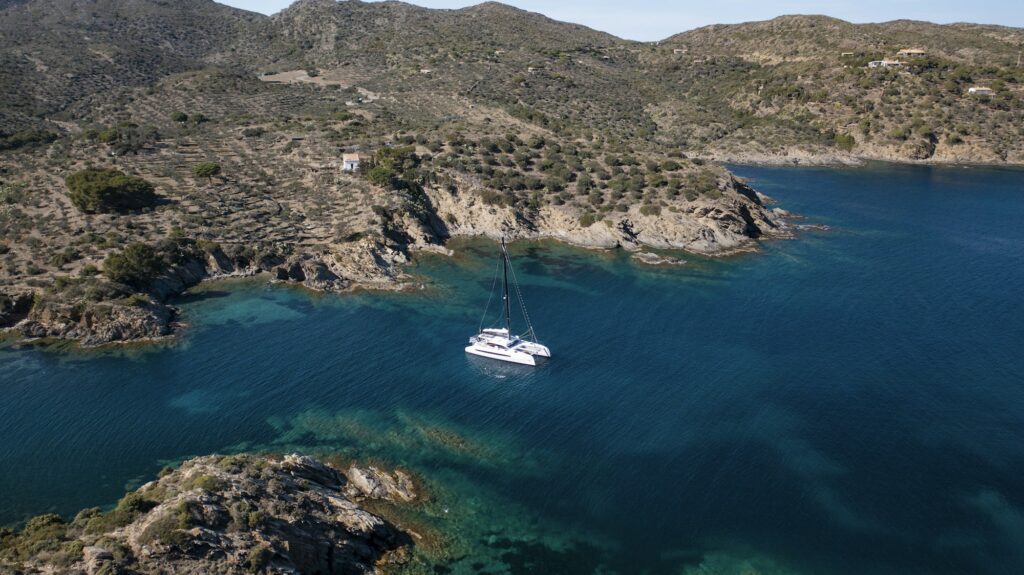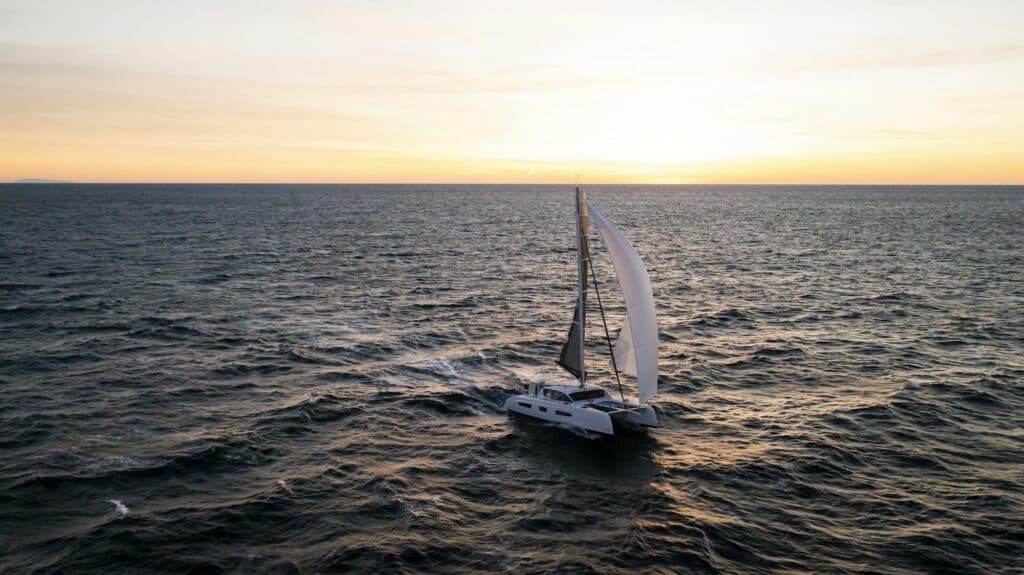
When you’re getting ready to set off on a sailing trip, it’s vital to find out about the seasons and weather phenomena in your chosen sailing area. Even before choosing your cruising destination or travel itinerary, or even selecting your boat!
Good reasons to pay attention to the weather and the seasons, popular routes to take advantage of pleasant conditions, weather training and the need, sometimes, to revise your sailing programme… In this article, Outremer takes a look at the subject.
The importance of studying the weather situation beforehand
Preparing your catamaran cruise must inevitably take into account the seasons and weather trends. You will plan your adventure, geographically and in time, to avoid, as far as possible, the main sources of inconvenience linked to the weather. Forget areas that are frequented by cyclones at certain times of the year, areas where the seas may be too rough or too choppy, passages where the currents are too strong, places where there is no wind…
If you’re planning a major voyage such as a round-the-world sail, it probably won’t be possible to avoid all the complicated situations. On the other hand, by being well prepared and thinking ahead, you’ll have every chance of making the most of your sailing, and getting out on the water in complete safety.
In order to visit certain ports of call, you may need to meet a certain number of conditions. Depending on your planned cruising itinerary, you may need to arrive at slack water for a particular passage, on a rising or falling tide. Sometimes, an anchorage area may only be accessible during periods of high tide, or in a particular wind sector. Find out as early as possible whether or not there are any stopovers of this type in your schedule: planning access conditions will ensure that you don’t miss the opportunity to visit these destinations if it arises.

Discover the world under sail by following the seasons
Most sailors follow the same ‘main routes’ around the world, often at the same times. In this way, they hope to enjoy calm sailing, with the help of the weather. This is the case, for example, for crews who opt to sail downwind along the Trade Winds route:
Their voyage generally begins in the last quarter of the year. Departing from France or Europe, they reach the Atlantic Ocean: they make a first crossing to the Canaries, then a second to the Caribbean Sea – ideally before the end of January. The sailors cross the Panama Canal towards the Pacific Ocean in May and June, then set course for French Polynesia. After a few months there, they continue their journey westwards, ideally leaving before the end of April for New Caledonia, New Zealand or Australia.
Then it’s time to head for Indonesia and the Indian Ocean, where they will be sailing during the summer and autumn. The circumnavigation ends with a passage to Cape Town in South Africa, ideally at the end of the year. Sailors then cross the South Atlantic from west to east in January or February, followed by a return transatlantic crossing, often via the Azores, between March and June.
Crews setting sail from Europe to South America head for Brazil between November and January, then round Cape Horn during the first two months of the year.
Avoiding tropical depressions, tropical storms and cyclones
Depending on the type of sailing you are planning, you will be interested in the different cyclone seasons around the world. Depending on whether you want to visit destinations in the northern or southern hemispheres, you will take different precautions: the cyclone season in the French West Indies covers the months of June, July, August, September and October, while in the southern hemisphere it runs from the beginning of November to the end of April. If you want to sail in Réunion, Mayotte or the South Pacific – in New Caledonia, Wallis and Futuna or French Polynesia, for example – it’s best to choose the period from May to October.
Of course, these are only guidelines: a major weather event can occur at any time, so you should always keep up to date with the weather forecasts.
Catamaran maintenance and different equipment for different regions
If you’re planning a long cruise in a specific region of the world, you should also think about the maintenance of your catamaran. It won’t be the same if you’re planning to sail in a temperate zone, a tropical zone or the polar regions. For the catamaran’s crew, too, the cruising area will determine the equipment you need to take on board.
Even if your chosen sailing period and your future destination seem to protect you from bad weather, don’t forget to have the right equipment for bad conditions: when sailing, events can change quickly!
Read also: Safe sailing – Nikki Henderson

Weather training, a must for catamaran cruising
When you’re cruising on a catamaran, whether you’re leaving for a short or long time, coasting close to the coast or sailing in the middle of the ocean, it’s always essential to find out about the weather forecast. Consulting several reliable sources should enable the skipper to make informed decisions, for the safety of both crew and vessel.
Before setting off on a long sailing trip, we strongly recommend that you take a marine weather training course: with knowledge of the weather phenomena likely to occur in different parts of the globe and a perfect understanding of the data you will receive, you will have all the keys in hand to make the right choices and sail without being stressed.
Sailing programme and weather: always the need to adapt
Finally, when sailing, you must always bear in mind that weather changes can be sudden and significant.
When cruising on a catamaran, it’s important to remain flexible: when planning your cruising itinerary, always think about alternative routes or a different schedule so that, if necessary, you can adapt to events.
Even though it may be disappointing to have to shorten the length of a stopover or to have to abandon a scheduled stopover, the safety of the crew must be the priority in all circumstances.



